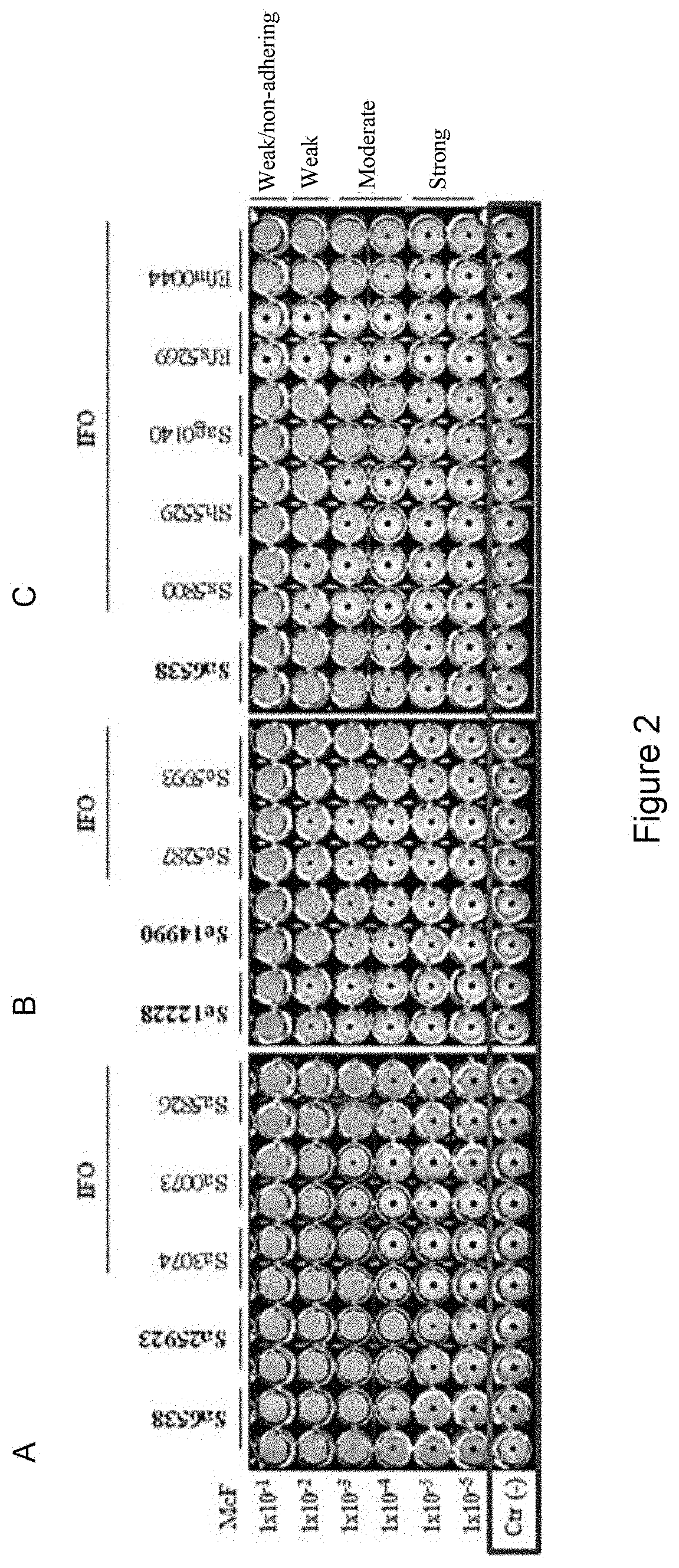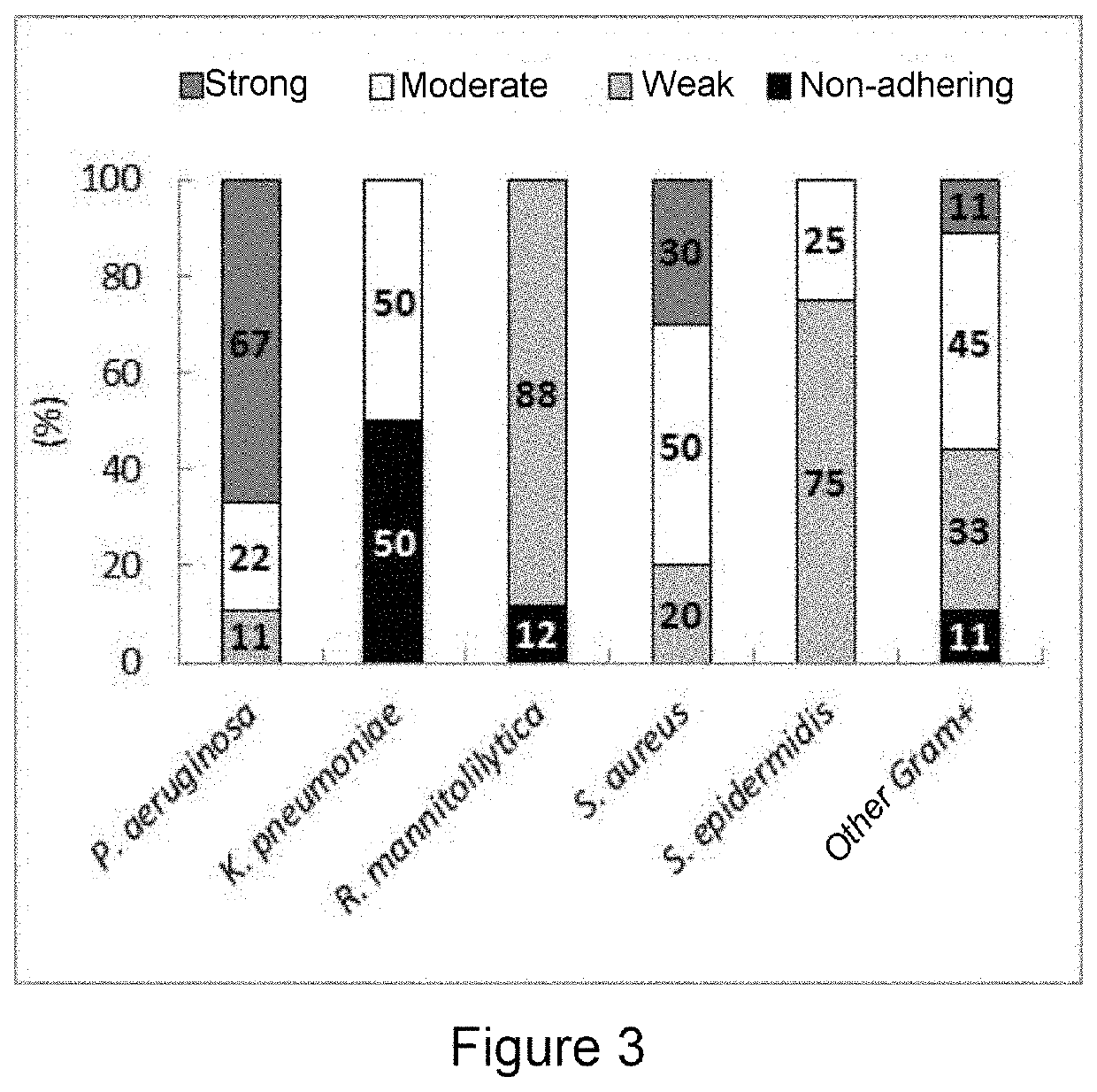Method for classifying microorganisms
a microorganism and microorganism technology, applied in the field of microorganism classification, can solve the problems of antibiotic treatment, failed treatment, serious problem of bacteria biofilm, etc., and achieve the effect of enhancing the contrast between the particles and the solution
- Summary
- Abstract
- Description
- Claims
- Application Information
AI Technical Summary
Benefits of technology
Problems solved by technology
Method used
Image
Examples
Embodiment Construction
luation of the Microorganism Biofilm-Producing Capacity
[0105]In the example below, an example of the process according to the disclosure is especially denoted characterization process or cBFRT process. In this example, the materials and methods used were the following:
Strains and Growth Conditions
[0106]Reference strain: Staphylococcus aureus American Type Culture Collection (ATCC) 25923, Staphylococcus aureus ATCC 6538, Staphylococcus epidermidis ATCC 14990, Staphylococcus epidermidis ATCC 12228, Klebsiella pneumoniae ATCC 700603, Klebsiella pneumoniae ATCC 13883, Pseudomonas aeruginosa ATCC 47085, Pseudomonas aeruginosa ATCC 9027, Pseudomonas aeruginosa PA14, Ralstonia mannitolilytica LMG 6866, Ralstonia mannitolilytica BK931 and the clinical isolates of bacteria were cultured aerobically on a nonselective agar (blood agar, chocolate agar, MacConkey agar) (Oxoid, Hampshire, United Kingdom) at 37° C.
Selection of the Isolates
[0107]A total of 52 clinical isolates collected from patien...
PUM
| Property | Measurement | Unit |
|---|---|---|
| size | aaaaa | aaaaa |
| size | aaaaa | aaaaa |
| temperature | aaaaa | aaaaa |
Abstract
Description
Claims
Application Information
 Login to View More
Login to View More - R&D
- Intellectual Property
- Life Sciences
- Materials
- Tech Scout
- Unparalleled Data Quality
- Higher Quality Content
- 60% Fewer Hallucinations
Browse by: Latest US Patents, China's latest patents, Technical Efficacy Thesaurus, Application Domain, Technology Topic, Popular Technical Reports.
© 2025 PatSnap. All rights reserved.Legal|Privacy policy|Modern Slavery Act Transparency Statement|Sitemap|About US| Contact US: help@patsnap.com



